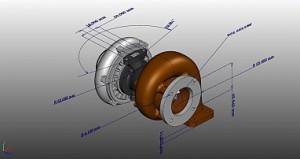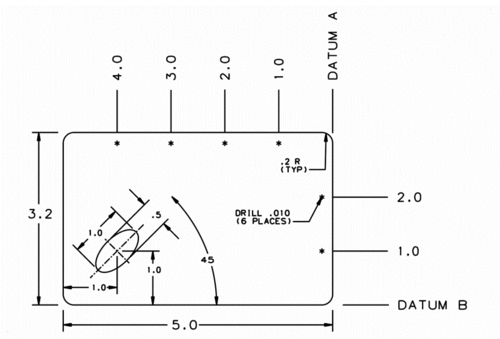IGES (*.igs, *.iges)
Here comes a quote from a nice article by Ed Lopategui “The Initial Graphics Exchange Specification (IGES) started as a US Air Force project specifically for exchange of CAD geometry, which culminated in an ASCII-based exchange format adopted by the American National Standards Institute (ANSI). An aged, monolithic standard originally designed for wireframe and surface data, IGES underwent several revisions to extend its capability. Those revisions finally brought the standard into the realm of solid modeling. The chief advantage of IGES is that it is unencumbered by licensing, i.e. it’s cheap as free. Which is probably why it’s still everywhere after all these years. But all meaningful development of IGES stopped in 1996 at version 5.3.
Which brings us to the larger point. It’s likely time to leave IGES behind for good. Especially in light of available direct translation, direct modeling, and the continued evolution of STEP, there’s little excuse for holding on to IGES. After all:
“The Initial Graphics Exchange Specification (IGES) started as a US Air Force project specifically for exchange of CAD geometry, which culminated in an ASCII-based exchange format adopted by the American National Standards Institute (ANSI). An aged, monolithic standard originally designed for wireframe and surface data, IGES underwent several revisions to extend its capability. Those revisions finally brought the standard into the realm of solid modeling. The chief advantage of IGES is that it is unencumbered by licensing, i.e. it’s cheap as free. Which is probably why it’s still everywhere after all these years. But all meaningful development of IGES stopped in 1996 at version 5.3.
Which brings us to the larger point. It’s likely time to leave IGES behind for good. Especially in light of available direct translation, direct modeling, and the continued evolution of STEP, there’s little excuse for holding on to IGES. After all:
- Older than dirt. Regardless of how good it might have been in 1996, software has changed quite a bit since and will continue to change with new capabilities and requirements. For crying out loud, the IGES logo has tape reels in it. TAPE.
- Doesn’t support product structure. No assembly models except as a monolithic import. Decimating product structure is generally a bad idea. How long have components been around?
- Abandoned. No one’s going to improve it. Ever.
- Solids capability is weak. Solids came late to IGES development. Consequently, translation of solids is more prone to geometric inconsistencies, resulting in unsewn/untrimmed surfaces. While IGES is still effective in wireframe translation, who uses wireframe anymore?
 Look at this picture above! It uses linear, angular, and ordinate dimension entities, as well as examples of both circular and conic arcs. It is usually the first part used when testing an IGES translator, because the standard has a picture of what it should look like.
Look at this picture above! It uses linear, angular, and ordinate dimension entities, as well as examples of both circular and conic arcs. It is usually the first part used when testing an IGES translator, because the standard has a picture of what it should look like.
Picture source: wikipedia
